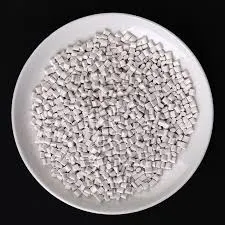Understanding the Uses of L-Ornithine L-Aspartate Injection
L-Ornithine L-Aspartate (LOLA) injection is increasingly recognized in the medical field as a therapeutic solution for various conditions, particularly those related to liver function and hyperammonemia. This article explores the uses, mechanisms, and benefits of LOLA injections.
What is L-Ornithine L-Aspartate?
L-Ornithine L-Aspartate is a compound formed from the amino acids ornithine and aspartate. It plays a crucial role in the urea cycle, which is responsible for removing ammonia from the bloodstream. Ammonia is a toxic substance produced during the breakdown of proteins. Elevated ammonia levels can lead to serious health consequences, including hepatic encephalopathy, a severe brain disorder that occurs in individuals with liver dysfunction.
Therapeutic Uses
1. Management of Hyperammonemia One of the primary uses of LOLA injection is to manage hyperammonemia, particularly in patients with liver disease. When the liver is compromised, it struggles to clear ammonia from the blood. LOLA helps accelerate the conversion of ammonia into urea, which is then excreted through urine, thereby reducing the concentration of ammonia in systemic circulation.
2. Liver Diseases LOLA injections are frequently administered to patients with acute liver failure and chronic liver diseases such as cirrhosis. By reducing ammonia levels, these injections may help prevent complications associated with hepatic encephalopathy and support overall liver function.
3. Enhancement of Nitrogen Metabolism In addition to ammonia detoxification, LOLA plays a role in nitrogen metabolism. It can promote the excretion of excess nitrogen in the form of urea, which helps maintain a balanced nitrogen level in the body, particularly in individuals with metabolic disorders that affect nitrogen processing.
4. Supportive Therapy in Hepatic Encephalopathy As hepatic encephalopathy progresses, it can cause various neurological symptoms ranging from mild confusion to deep coma. LOLA injections can be used as part of a comprehensive treatment strategy to manage and potentially reverse these cognitive impairments by improving ammonia detoxification.
l ornithine l aspartate injection uses

5. Adjunct to Liver Transplantation For patients awaiting liver transplantation, LOLA injections may provide symptomatic relief from hepatic encephalopathy symptoms and support their overall health status, allowing them to be better candidates for surgery.
Mechanism of Action
The efficacy of LOLA injections can be attributed to its components, ornithine and aspartate. Ornithine plays a pivotal role in the urea cycle, facilitating the conversion of ammonia to urea, which is less toxic. Aspartate, on the other hand, is involved in various metabolic pathways, including gluconeogenesis and the synthesis of other amino acids. The combination of these amino acids in LOLA injections provides a dual action—reducing ammonia levels and supporting the metabolic needs of the body.
Administration and Dosage
LOLA injections are typically administered intravenously, allowing for rapid absorption and action in the bloodstream. The dosage and frequency depend on the patient's condition, liver function status, and response to treatment, necessitating careful monitoring by healthcare professionals.
Potential Side Effects
While generally considered safe, LOLA injections may cause mild side effects such as gastrointestinal disturbances, headache, or allergic reactions in some individuals. It is essential for healthcare providers to assess the patient's medical history and discuss any potential risks before initiating treatment.
Conclusion
L-Ornithine L-Aspartate injection is an important therapeutic option for managing hyperammonemia and supporting liver function in patients with liver diseases. Its ability to facilitate ammonia detoxification and enhance nitrogen metabolism underscores its significance in clinical practice. As research continues to advance, the applications of LOLA injections may expand, potentially offering new insights into the management of hepatic conditions and improving patient outcomes. Its role in the modern therapeutic landscape marks a notable advancement in hepatology, contributing to the overall understanding of ammonia metabolism and liver health.

